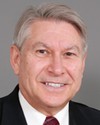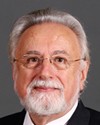Part of it is. I think that with the re-launch of almost anything...and not to put too fine a point on it, but having been in campaigns, you know by the time you get to the end of a campaign you're doing pretty well, but the first couple of days on the road, you can have a couple of glitches. I think that we're experiencing this new plateau of activity, the type of hesitancy that will be well exercised away by the time we're in full swing.
We've found, as we've talked to the regulator, a willingness to look at opportunities to collaborate on ways of ensuring that there's greater transparency, more of a connection with the public. And Mr. Henuset, earlier on when he introduced his remarks, had already indicated that he has a very intensive on-the-ground campaign prior to his doing anything at all in the formal sense.
It seems to me that there are parts of things that will help us, but as we try to re-launch, there will be some stops and starts. I think all of us, though, would like to anticipate that the two primary issues that are of big concern are one, the timing of decisions to proceed, outside the regulatory, but then, two, the acquisition of the human resources to permit us to do all the work that is out there, in fact the capacity to do not only refurbishment but the new build and new projects, which Mr. Henuset has described are of some concern.
That, I think, forces people into positions where they reconsider what they used to do as a matter of course. So you will have seen, for instance, the regulator has released a couple of new editions of the status of the way processes are to work with new-build operations and with the way we're conducting our refurbishment operation.
It's not like we're not considering it. I think it's like, “once I get the applications, then I can really do it”, but government doesn't like to fund people who get ready for things that may not happen. So there has been that sort of tentativeness.
Now, instead of zero new-build requests, we have a request for an EA for a new build at Bruce, an EA at Ontario Power Generation Facilities at Darlington, and we have Mr. Henuset now out in Alberta. So we have three opportunities to build new, and we have a regulator that had none of that before.
I think it's understandable. That doesn't make it less anxious and stressful for people who are in the middle of it. I think by the time we get the first one under our belts, we'll be well exercised and able to get these things done pretty well.




